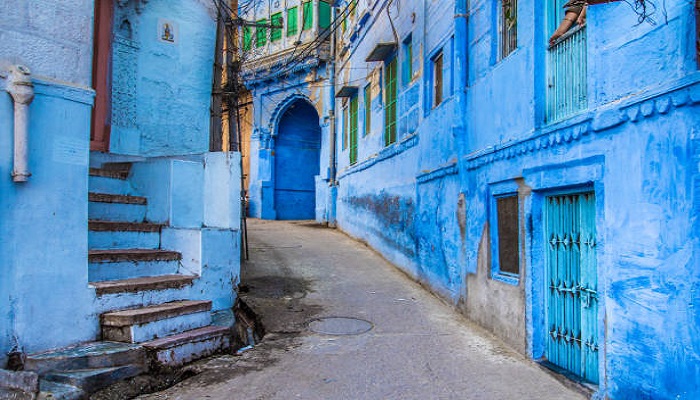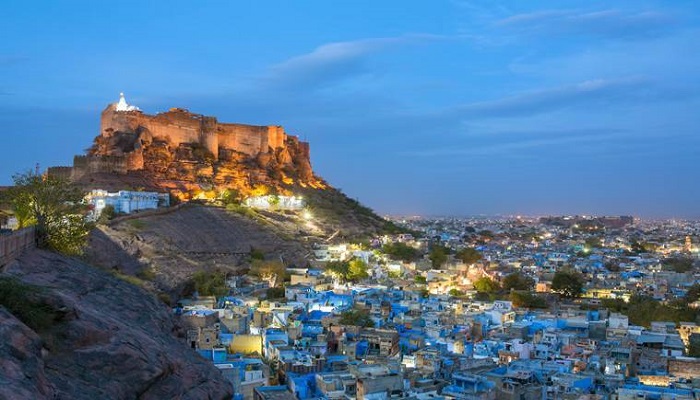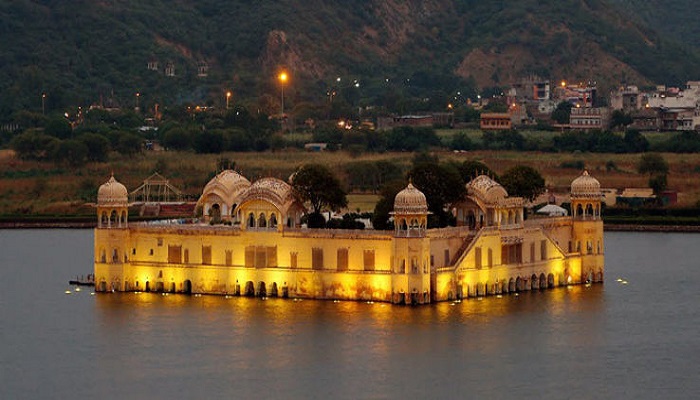Rajasthan has always been one of the most attractive tourist spots in India, especially for
those who have an inclination towards Indian history. Rajasthan has been a part of a number of incredible eras of Indian history such as Mauryan, Arjuna, Kushan, Malava, Yaudhya during the ancient times, followed by Mamluk, Khilji, Tughlaq, Lodi, Sayyed and Mughals in the medieval part of the Indian history and of course, who can forget our pride, the Rajput. As a result, even in modern times, Rajasthan still has that taste of Indian history that is preserved in the form of ancient forts, foods, culture, ethnicity and traditions. Rajasthan has various cities and villages that are worth a visit.
Today, we would like to talk about two of the most popular cities in Rajasthan namely Jodhpur and Jaipur and will let you know why they are called the ‘Blue City’ and ‘Pink City’ respectively
Jodhpur- The Blue City
Jodhpur is called the ‘Blue City’ owing to a number of houses there are painted in a blue
colour. However, contrary to the common notion, not entire Jodhpur is painted in the
colour Blue. Only the houses near the Mehrangarh Fort, which is located in the Jodhpur
Old City are coloured blue.
There are many reasons why most of the houses are blue-coloured in Jodhpur. Let us take
look at some of such reasons.
The Colour of Cool
Jodhpur is also known as the Sun City as the weather in Jodhpur is bright and sunny
throughout the year. The colour Blue is a good reflector of sun rays and hence the people of
Jodhpur believe it helps their houses to be cool during the warm months.

The Sacred Colour of Lord Shiva
The colour Blue is associated with Lord Shiva who believed to gulp down the vicious Halahal poison to save the planet during the Samundra Manthan.
The poison turned the Lord Shiva’s body into a blue colour and hence the colour blue is
considered as a sacred colour. The Lord Shiva’s devotees, who have settled down in Jodhpur,
paint their houses in Blue colour to show their devotion and gratitude to the Greater God.
The Colour of Status
There is another belief in Jodhpur that the colour Blue determines the social status.
Going back to many centuries when there was the Hindu Caste System, the colour Blue was
putative as a colour of status. As a result, the Brahmin Community painted their houses
in the Blue colour to differentiate themselves from other communities that were considered
as the low caste.
The Colour that Deters Termites
Another theory suggests that the termites, over the time, have damaged a number of
historic structures. And, the colour Blu prevents such termites and pests to dam age the buildings and monuments. The locals in Old Jodhpur City paint their houses with blue paint, which is a mixture of limestone and copper sulphate.

The blend thwarts the termites’ attack and gives their houses a cool and calm interior. In the midst of these multiple stories, theories and beliefs, one thing that we are sure of is that the colour Blue gives the Sun City a beautiful ambience that is quite
pleasing for eyes.
Jaipur- Pink City
Let us now take a look at the stories and theories that explain why Jaipur is called the Pink
City. Jaipur is called the Pink City for its typical Terracotta Pink stones that are exclusively used to construct all the structures in the city. There is a historic significance for the uniformity of the Jaipur City that lies back in the reign of one of the richest ruler of India, Maharaja Sawai Ram Singh.
During the British rule in India, the Prince of Wales, Albert Edward, who was also the son
of Queen Victoria visited India in the year of 1876. To welcome the Royal guests, Maharaja
Sawai Ram Singh had the entire city of Jaipur painted in the colour Pink, which was considered as the colour of hospitality back in the time.

The Prince Albert Edward was impressed by the gesture and hospitality of Maharaja Ram
Singh and refer to Jaipur as the ‘Pink City’. Consequently, the Jaipur has got the name as
the ‘Pink City’, which is still popular. We would also like you to know that the same Prince
Albert Edward later became the Emperor of India is known as the King Edward VII.
The influence and power of Maharaja Sawai Ram Singh can be assessed by the fact that in
1877, he passed the law that all the future constructions in the Jaipur will be maintained
in the colour Pink only.
The legends and historians have it that the Queen of Jaipur – most beloved wife of Ma haraja Sawai Ram Singh – adored the Terra cotta Pink colour, which is why the Maharaja had passed the law to make it illegal for future buildings and constructions to paint any other colour than Terracotta Pink.

Since the people of Jaipur believe in preserving the heritage value and emphasize in their cultural traditions, the city maintained its idiosyncratic Terracotta Pink colour even after almost 150 years of the visit of Prince Albert Edward. The pride of Jaipur shines through the glorious palaces, forts, majestic temples and rich cultural heritage that honour the Royal clans. As a result, Jaipur is considered as one of the most favourite destinations for tourists across the world.
Every year, Jaipur welcomes millions of both national and international tourist who
visit the city to experience the royalty that lies in each and every historic fort, palace,
temple and other monuments of Jaipur. Some of the best tourist attractions of Jaipur include
the Amber Fort, City Palace, Galta Ji Temple, Hawa Mahal Palace, Jal Mahal, Jantar Mantar
Jaipur, Lake Man Sagar, Sun Temple and Surya Mandir etc.
Any tour of the northern part of India is incomplete without visiting the royal city of
Jaipur.



